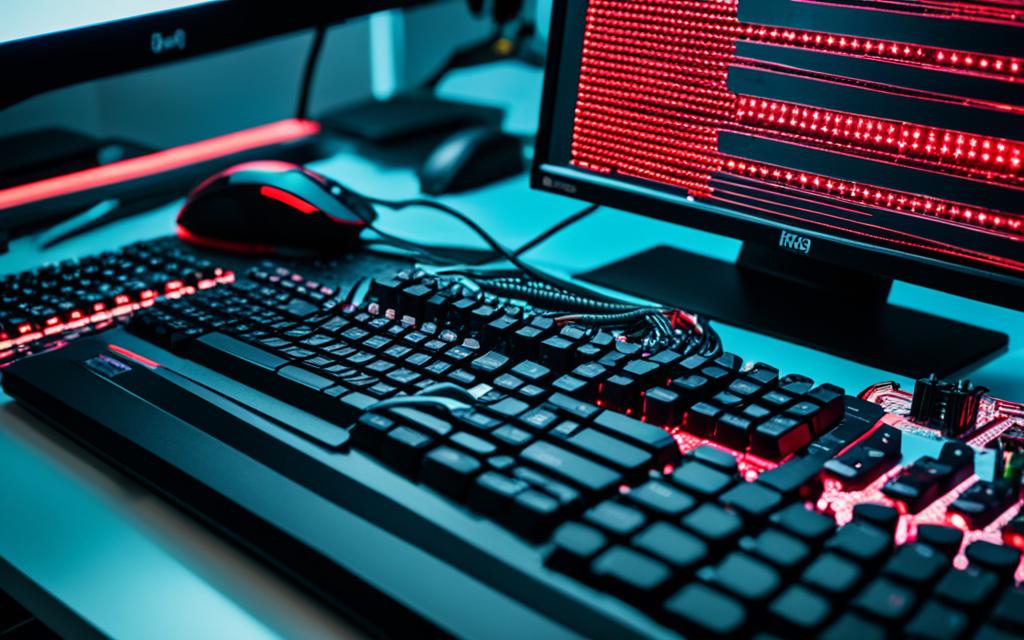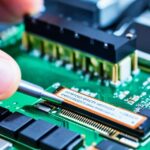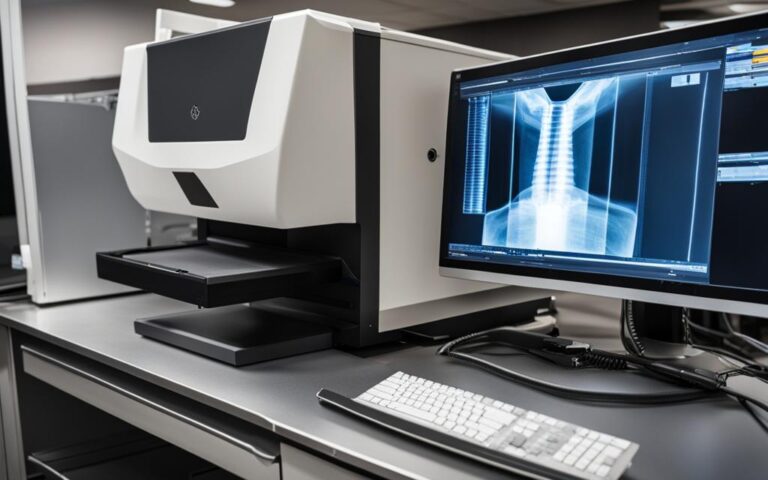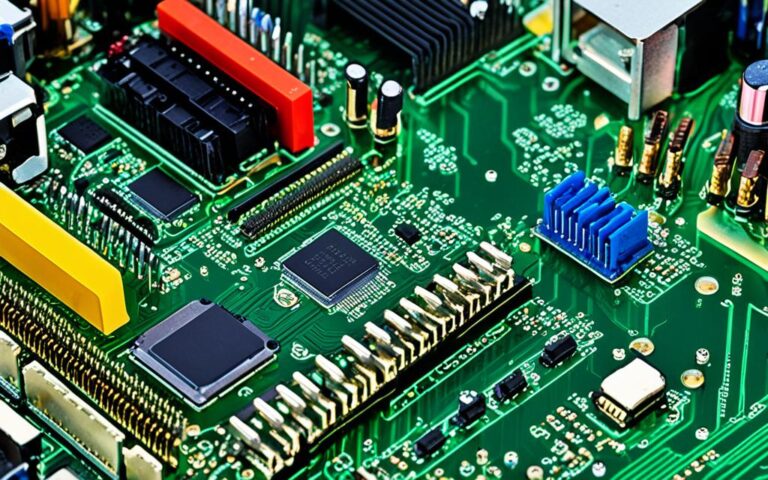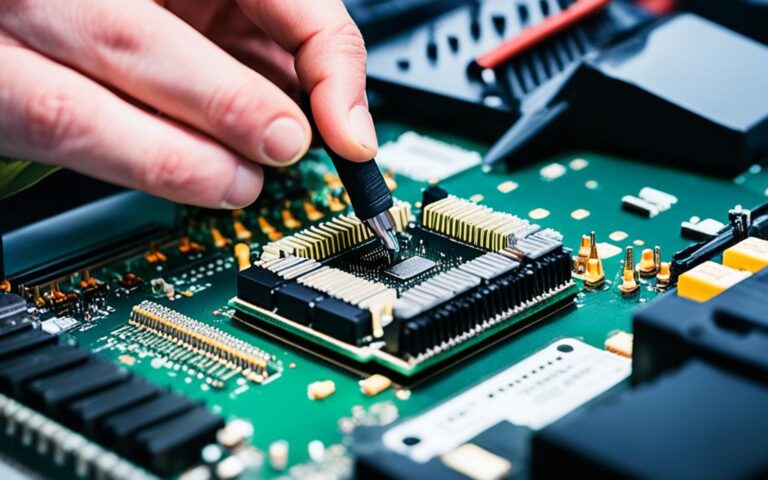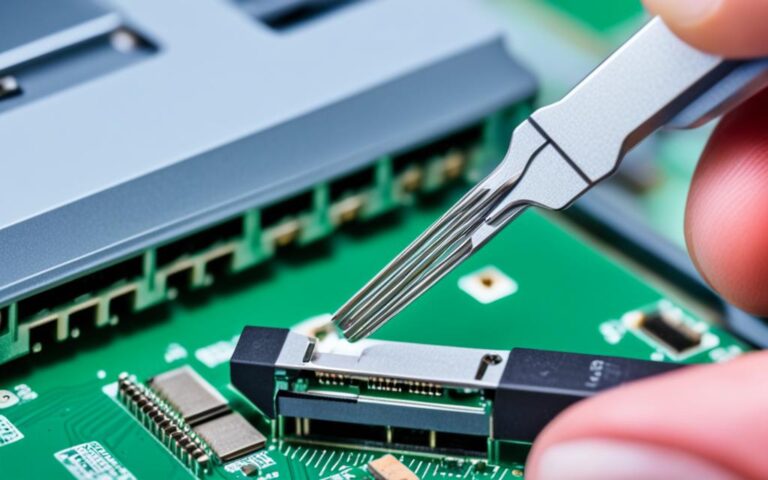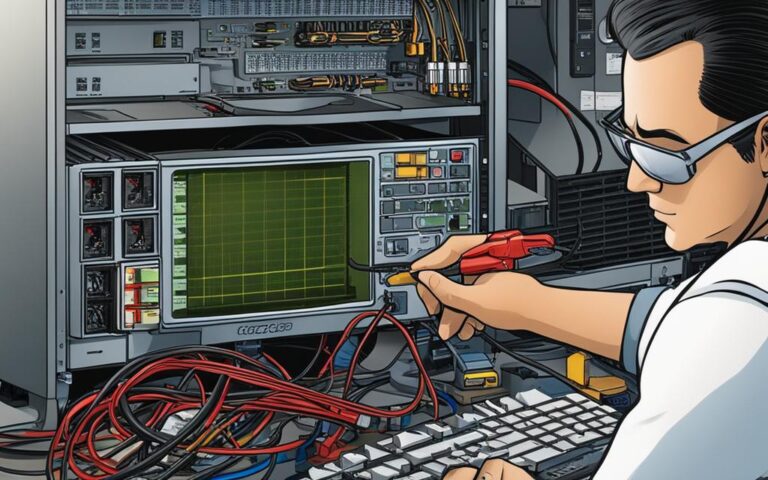Fixing Beeping Errors on Desktop Computers
When it comes to desktop computers, encountering beeping errors can be frustrating. These beeping sounds are not just random noise; they are signals from your computer trying to communicate a problem. It is crucial to understand the underlying cause of these beeping errors to effectively fix them and ensure the smooth functioning of your computer.
Beeping errors usually indicate a hardware issue, and resolving them can be a challenge. However, with the right troubleshooting guide, you can diagnose and fix the problem. By listening to the beep pattern and identifying the BIOS maker, you can access the appropriate troubleshooting guide specifically designed for your desktop computer.
Whether you are a novice or an experienced user, our comprehensive troubleshooting guide will assist you in resolving beeping errors on your desktop computer. Through step-by-step instructions, you will be able to identify the hardware problem causing the beeping errors and take the necessary steps to fix it. By following the troubleshooting guide, you can avoid unnecessary expenses and save time.
Stay tuned to our upcoming sections, where we will explore the various beep codes, provide tips on troubleshooting beeping errors, and discuss specific beep codes for common BIOS manufacturers and Dell desktops. With our troubleshooting guide, you can effectively resolve beeping errors on your desktop computer and ensure its optimal performance.
Understanding Beep Codes
Beep codes are a series of beeps that your computer emits during the startup process to indicate a problem. It’s essential to pay close attention to the number of beeps, the length of the beeps, and if they repeat. By understanding the specific beep pattern, you can determine the BIOS maker and consult the relevant troubleshooting guide for further steps. Different BIOS manufacturers have their own unique beep code indications.
Beep codes serve as a vital diagnostic tool, providing valuable insights into the underlying hardware issue. By decoding these beeps, you can pinpoint the specific problem that is preventing your computer from starting up successfully.
When encountering beep codes, it’s crucial to note down the sequence of beeps and their characteristics. Each beep code consists of a specific number of beeps and their duration, providing essential clues for troubleshooting. Depending on the BIOS maker, the beep code patterns may vary, so it’s important to consult the appropriate troubleshooting guide.
To better understand how beep codes work, consider the following example:
Award BIOS:
- One long beep followed by two short beeps: Indicates a video error
- Repeating beep pattern: Suggests RAM problems
By interpreting the specific beep patterns, you can determine if the issue lies with the video card or the RAM, enabling you to take the necessary steps to fix the problem.
Decoding Beep Codes for Different BIOS Manufacturers
Each BIOS manufacturer has its own set of beep code indications. Understanding these distinctions is essential for accurate troubleshooting. Here’s a table summarizing the beep codes for common BIOS makers:
| BIOS Maker | Beep Code Patterns |
|---|---|
| Award BIOS | One long beep followed by two short beeps: Video error Repeating beep pattern: RAM problems |
| AMI BIOS | One short beep: DRAM refresh failure Multiple short beeps: Memory or CPU failure |
| Phoenix BIOS | One long beep followed by two or three short beeps: Video card or memory problem |
By referring to this table, you can quickly identify the BIOS maker and the associated beep code patterns, guiding your troubleshooting efforts in the right direction.
Troubleshooting Beeping Errors
To troubleshoot beeping errors on your desktop computer, follow these steps:
-
Power on or restart your computer and listen carefully to the beeps.
-
Note down the number of beeps, their length, and if they repeat.
-
Determine the BIOS manufacturer by using a tool or checking the BIOS chip on the motherboard.
-
Consult the troubleshooting guide specific to your BIOS maker to identify the hardware problem causing the beeping errors.
-
Take appropriate steps to fix the issue, such as reseating RAM or replacing a faulty video card.
Troubleshooting beeping errors is a crucial step in resolving hardware problems with your desktop computer. By carefully following these steps, you can identify the underlying issue and take the necessary actions to fix it.
Beep Codes for Common BIOS Manufacturers
Different BIOS manufacturers have their own beep code indications. Here are some examples:
- Award BIOS: One long beep followed by two short beeps indicates a video error, while a repeating beep pattern usually indicates RAM problems.
- AMI BIOS: One short beep can indicate a DRAM refresh failure, while multiple short beeps may signify memory or CPU failure.
- Phoenix BIOS: Beep codes vary depending on the specific version, but a common pattern is one long beep followed by two or three short beeps, indicating a video card or memory problem.
To better understand the beep codes for different BIOS manufacturers, refer to the table below:
| BIOS Manufacturer | Beep Code Indications |
|---|---|
| Award BIOS | One long beep followed by two short beeps: Video error Repeating beep pattern: RAM problems |
| AMI BIOS | One short beep: DRAM refresh failure Multiple short beeps: Memory or CPU failure |
| Phoenix BIOS | One long beep followed by two or three short beeps: Video card or memory problem |
These beep codes can serve as vital clues when troubleshooting hardware issues on your desktop computer. By identifying the specific beep pattern, you can narrow down the problem and consult the appropriate troubleshooting guide from the BIOS manufacturer.
Diagnostic LED or Beep Codes for Dell Desktops
Dell desktops are equipped with diagnostic indicators in the form of LED lights or beep codes, which play a crucial role in diagnosing and resolving startup issues. These indicators provide valuable insights into the system’s status and aid in troubleshooting hardware problems. By understanding the specific beep codes and decoding them, users can effectively identify the underlying issues and take appropriate measures to resolve them.
Dell desktops have distinct beep codes depending on the model and BIOS version. To effectively leverage the diagnostic indicators, it is highly recommended to consult the official Dell guide that specifies the beep codes for each specific model and BIOS version. This guide will help users decode the beep codes accurately, enabling them to pinpoint the source of the problem and proceed with the necessary troubleshooting steps.
| BIOS Maker | Beep Code | Indication |
|---|---|---|
| Dell | 1 beep | System boot successful |
| Dell | 2 beeps | Memory issue |
| Dell | 3 beeps | System board failure |
| Dell | 4 beeps | Graphics card issue |
Dell desktops also incorporate diagnostic LED lights, which provide immediate visual feedback about the system’s status. These LED lights illuminate in different colors or patterns to indicate various hardware components, such as CPU, memory, or storage status. By understanding the meaning behind these LED lights, users can quickly identify potential hardware failures and take prompt action.
When troubleshooting Dell desktops, it is essential to utilize the combination of beep codes and diagnostic LED lights to gain comprehensive insights into the system’s health. By consulting the diagnostic guides provided by Dell and utilizing these indicators effectively, users can swiftly diagnose and resolve hardware issues, ensuring optimal performance and functionality of their Dell desktop computers.
Conclusion
Dealing with beeping errors on desktop computers can be a frustrating experience. However, with the help of a comprehensive troubleshooting guide, it is possible to resolve these issues effectively. By listening attentively to the beep pattern and identifying the BIOS maker, you can pinpoint the hardware problem causing the beeping errors and take the necessary steps to fix it.
It is important to follow the specific instructions provided in the troubleshooting guide for your BIOS manufacturer. Different BIOS makers have their own unique beep codes, and understanding these codes is crucial in diagnosing the underlying issue. By following the troubleshooting guide, you can ensure that you are implementing the correct solutions and avoiding unnecessary complications.
If you find yourself in a situation where the troubleshooting guide does not provide a solution or if you are unsure about performing the necessary steps, it is advisable to seek additional support from technical experts. They can offer guidance and assistance to help resolve the beeping errors.
In conclusion, although beeping errors on desktop computers can be disruptive, they can be resolved by following a troubleshooting guide tailored to your BIOS. By utilizing the resources available and taking the appropriate measures, you can effectively troubleshoot the issue and restore your desktop computer to optimal functionality.
